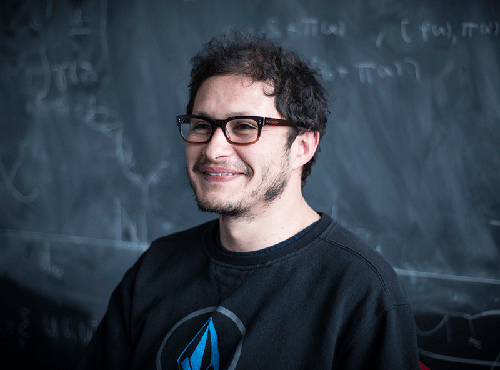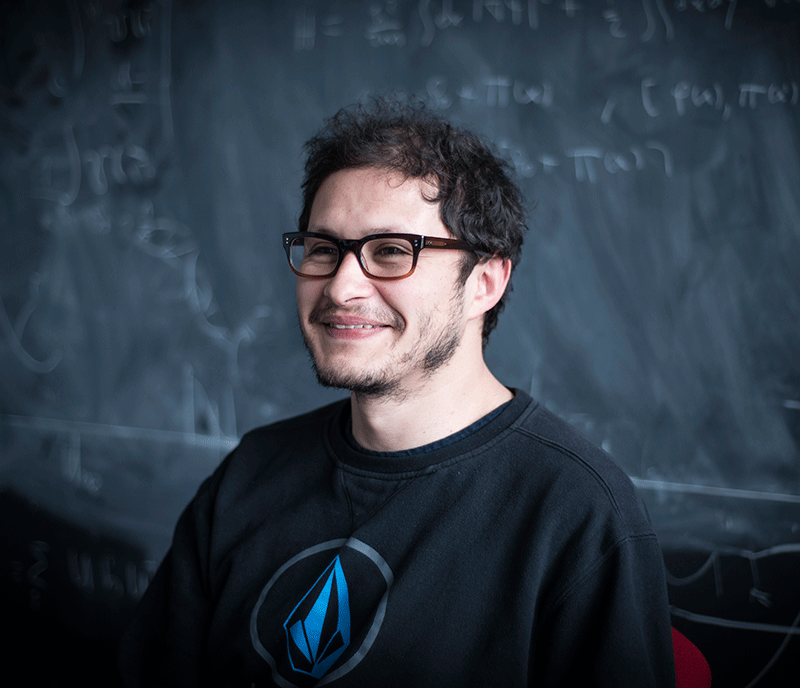Q&A: A Condensed Matter Theorist Embraces AI
Juan Carrasquilla has given in to what he jokingly calls “the artificial intelligence (AI) hype.” His first jump into AI came a few years ago during his time as a postdoc at the Perimeter Institute for Theoretical Physics in Canada, where he studied the complex properties of many interacting atoms, spins, and qubits. He’d seen papers about computers learning to play an Atari video game and a digital version of the board game Go. And he’d heard about friends and colleagues with physics backgrounds being hired to work on machine learning—the technology behind self-driving cars and speech recognition. This AI buzz, plus Carrasquilla’s feeling that he was making slow progress in his research, inspired him to educate himself about machine learning. Halfway through an online course, he latched onto a thought: he would teach a computer to recognize a phase transition by showing it pictures of particle configurations. He and his colleague Roger Melko soon demonstrated this idea in a 2017 paper.
After his postdoc, Carrasquilla worked at the quantum computing company D-Wave for about a year. Now, he’s back to a more academic setting with a position at the recently formed Vector Institute in Toronto, which aims to help Canada develop its foothold in AI research and the AI economy. In an interview with Physics, Carrasquilla explains how machine learning is like numerical calculations in condensed matter and describes what he sees as the ultimate “big data” problem. He also shares why he’s an optimist about an AI future.
–Jessica Thomas
Jessica Thomas is the Editor of Physics.
What inspired you to teach a computer to recognize a phase transition from pictures?
In the online course, I worked with a machine-learning algorithm that recognizes the digits 0 to 9 from images of the numbers. I realized that the “fluctuations” in how all of us write a 5—say in italics, crooked, or bent—are akin to adding thermal or quantum fluctuations to a mean-field calculation of an ordered phase of a material. The fluctuations give a more realistic idea of what the phase looks like. Then I wondered if snapshots of a phase would reveal something about the phase that an algorithm could recognize.
Like a computer recognizing “fiveness” from 5’s written many different ways?
Exactly. The first example that Melko and I took was a ferromagnet of spins at finite temperature. We showed the machine-learning algorithm hundreds of “snapshots” of the phase at different temperatures that we had determined numerically. Then we asked it to tell us if the spins were magnetized or random.
At first the algorithm didn’t know, so it made a guess. We then proposed changes to its parameters and showed it another 100 images, and so on. In the end, the algorithm got pretty good. It could say: This one looks like a ferromagnet! This one looks like a paramagnet!
You’ve said that there are similarities between the algorithms used for AI and those used in computational condensed-matter physics. How so?
As a graduate student, I worked on a technique called variational Monte Carlo, where you write down an “ansatz” for a wave function for some quantum system. Then you optimize the parameters defining the wave function and try to get close to the energy of the system you want to study. That’s exactly what machine learning algorithms do. These algorithms use an ansatz for a problem of interest and then you tune the parameters defining the ansatz such that the algorithm does what you want it to do.
What inspired you to leave academia to work for D-Wave?
I wanted to see what happens when there are 200 people doing just one thing. Compared to academia, the objectives in industry change really quickly, and the problems are not as open-ended.
But I had a ton of ideas that I wanted to work on, and I couldn’t because I was working for the company. At some point, I just wanted to work on my ideas, and Vector was really receptive to letting me do that.
What physics problem do you hope machine learning will solve?
Finding the wave function of a many-electron system like a molecule is, in my view, the ultimate “big data” problem for physicists. An algorithm that can find this wave function—or at least an approximation of it—could solve problems in materials science and quantum chemistry. Using it, one could make drug discoveries, which is a multimillion-dollar problem. People already have ideas about how to do it. I do too!
Some say AI will solve humanity’s ills, others that it will leave us without jobs and unable to think for ourselves. Are you an optimist or a pessimist?
An optimist. The discovery of electricity and the industrial revolution happened, and look where we are. I don’t think people are complaining that they no longer have to carry stones all over the world to build the pyramids.
Know a physicist with a knack for explaining his or her research to others? Write to physics@aps.org. All interviews are edited for brevity and clarity.





